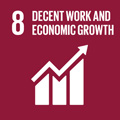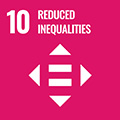- Docente: Renata Bottazzi
- Credits: 6
- SSD: SECS-P/01
- Language: Italian
- Moduli: Renata Bottazzi (Modulo 1) Tommaso Sonno (Modulo 2)
- Teaching Mode: Traditional lectures (Modulo 1) Traditional lectures (Modulo 2)
- Campus: Bologna
- Corso: First cycle degree programme (L) in Statistical Sciences (cod. 8873)
-
from Feb 10, 2025 to Mar 04, 2025
-
from Mar 05, 2025 to Mar 19, 2025
Learning outcomes
Il corso fornisce le conoscenze di base sui principi, metodologie e strumenti analitici della scienza economica. Specificamente, i fondamenti della microeconomia (comportamento delle imprese e dei consumatori/lavoratori e loro interazioni nei mercati dei beni e dei fattori produttivi) e della macroeconomia (prodotto/reddito/contabilità nazionale, crescita economica, moneta, politiche macroeconomiche). Al termine del corso lo studente ha acquisito padronanza della terminologia tecnica e dei metodi di analisi economica ed è quindi in grado di comprendere e di interpretare criticamente il dibattito sui principali temi economici.
Course contents
Part 1: MICROECONOMICS, 20 hours (Renata Bottazzi)
- Introduction: individual decisions and interactions.
- Market demand and supply.
- Firms in competitive markets.
- Markets, efficiency, and welfare.
- Market inefficiency: public goods, externalities and asymmetric information.
- Non-competitive markets: monopoly and oligopoly
Part 2: MACROECONOMICS, 16 hours (Giulio Zanella)
- The data of macroeconomics: measuring GDP, price indeces, labour market indicators.
- The real economy: productivity, economic growth and unemployment.
- The financial system: money, interest rates and inflation
Readings/Bibliography
- N. G. Mankiw e M. P. Taylor, Principi di Economia, ottava edizione italiana, 2022, Zanichelli.
- Lecture slides
Teaching methods
Traditional lectures with slides. For each topic, theoretical lectures will be followed by examples from the real world.
Exercises and tests.
Assessment methods
The exam is aimed at assessing whether students have understood basic economic concepts and whether they can apply them to simple economic cases. Assessment is by written exam and it includes multiple choice questions, questions testing knowledge of definitions, open questions and simple exercises in line with those covered in the lectures. The number of questions depends on their difficulty. A mock exam will be available in Virtuale.
The total mark is the sum of marks for each section; marks available are indicated on the exam sheet as appropriate. Final marks are out of 30 - each indvidual score is computed as a weighted average of the two parts, micro and macro, with 60% weight given to the best part and 40% weight given to the worst part. The minimum score assigned to each answer is zero: there is no negative mark for wrong answers. The maximum score that students can receive for answers that are correct and complete is 30 with distinction. The minimum pass grade is 18/30. Marks range:
<18: fail
18-23: pass
24-27: good
28-30: very good
30 cum laude: excellent
Students are not allowed to bring support material (textbooks, notes, internet enabled devices etc.).
Students may refuse the grade only once. The grade has to be considered for the whole exam; it is not possible to maintain the grade for just one of the two parts of the exam..
The overall exam lasts 75 minutes.
For any additional information please see the course web page within Virtuale.
Teaching tools
Students can find lecture slides, any additional material, exercises given in the lectures, and any other information relevant for the course, in Virtuale.
Office hours
See the website of Renata Bottazzi
See the website of Tommaso Sonno
SDGs




This teaching activity contributes to the achievement of the Sustainable Development Goals of the UN 2030 Agenda.
